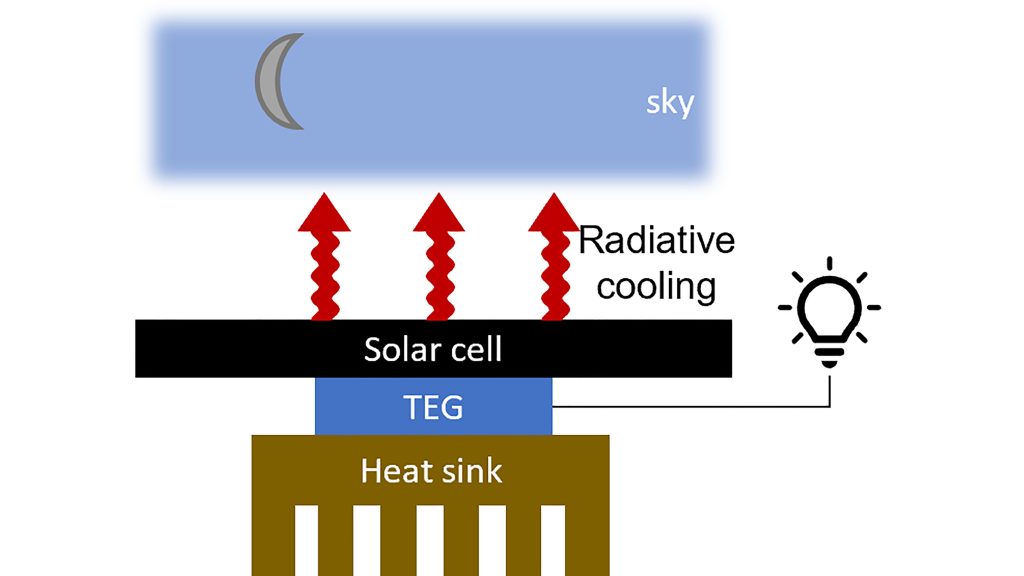Researchers from Stanford University have designed a solar cell based on radiative cooling that purportedly produces electricity at night.
Radiative cooling occurs when the surface of an object absorbs less radiation from the atmosphere and emits more. As a result, the surface loses heat to the outer space and a cooling effect can be achieved without the need for power.
“Such radiative cooling effect has received significant recent interest, focusing on achieving cooling in various materials and on integration in energy-related applications, such as building cooling,” the scientist explained, noting that this flow may be used for power generation at night.
The solar cell is based on a thermoelectric generator (TEG) module that extracts power from the radiative cooler at night and extra daytime power from excess heating coming from the cell itself.
“What we managed to do here is build the whole thing from off-the-shelf components, have a very good thermal contact, and the most expensive thing in the whole setup was the thermoelectric itself,” said researcher Zunaid Omair.
Popular content
The device achieved 50 mW/m2 of power generation with a clear night sky and an open-circuit voltage of 100mV, which the scientists described as significantly higher than the values achieved in previous demonstration.
“The nighttime power generation is around 10–100 mW/m2 depending on location and sky condition,” they said. “Our approach can provide nighttime standby lighting and power in off-grid and mini-grid applications, where PV cell installations are gaining popularity.”
They described their findings in “Nighttime electric power generation at a density of 50 mW/m2 via radiative cooling of a photovoltaic cell,” which was recently published in Applied Physics Letters. Radiative cooling has been applied to solar panel cooling by researchers at Shanghai Jiao Tong University in China, the Purdue University in the United States, the Catalan Institute of Nanoscience and Nanotechnology and the Instituto de Ciencia de Materiales in Spain, and the Jordan University of Science and Technology and the Australian College of Kuwait.
This content is protected by copyright and may not be reused. If you want to cooperate with us and would like to reuse some of our content, please contact: editors@pv-magazine.com.



Why is “Nighttime electric power generation at a density of 50 mW/m2 via radiative cooling of a photovoltaic cell,” even worthy of statements like “Our approach can provide nighttime standby lighting and power in off-grid and mini-grid applications, where PV cell installations are gaining popularity.”
This is such an over exaggerated amount of electricity.
How exactly is this even close to the necessary power to provide reasonable backup lighting?
The question I would ask is why did a team of researchers at Stanford even waste their time with what seems like an exercise in futility – this is the kind of thing I would expect from a hobbyist tinkering in his garage…
TEGs are already well understood and used where direct energy generation makes sense. Where is the nud…. new unique and difficult.
I do hope the archevement would go at very far, and time will come for great success in this Solar module technology, and the integration of scientist idea, is discovering key.
Thanks.